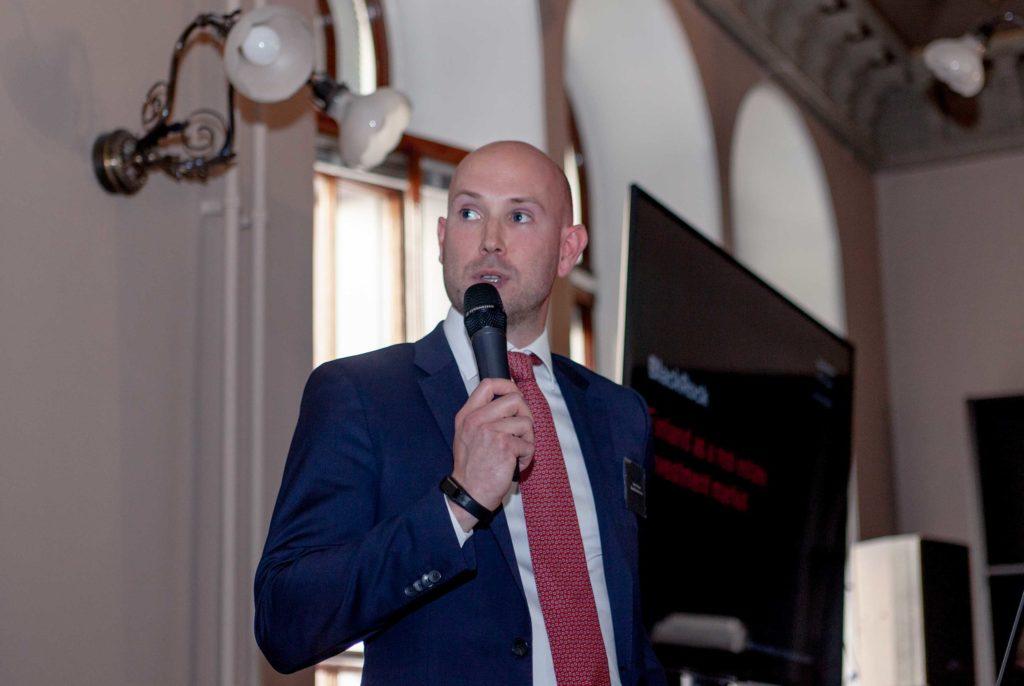Finland as a Real Estate Investment Market
The renaissance palace Erottaja2 was filled with an international crowd on 8 May 2019. KTI (Kiinteistötieto), BlackRock and Trevian arranged a pre-seminar which set the tone for the MSCI/KTI-Nordic seminar the next day. We were lucky to have many international guests at our event and the wonderful venue provided a beautiful backdrop for the information packed day. BlackRock Real Assets Vice President Victor Persson talked about Finland’s real estate investment opportunities from an outsider’s perspective. BlackRock recently bought buildings in Helsinki, including Erottaja2, so Finland and especially Helsinki have been on BlackRock’s radar for a while.
Below is a summary of Persson’s presentation and a video recording from the event – enjoy!
Nordic real estate market from an international point of view
Persson began his presentation by looking at the nordic real estate market as a whole. Even though it’s quite common to view the individual nordic countries as small markets, the Nordics as a whole is a sizeable market, says Persson: ”If you look at the Nordics as a region, we’re actually quite big, especially when it comes to real estate transaction volume.”
The Nordics together make up 5% of the European population, 9% of the economy in Europe and 15% of the transaction volume. The Nordics will also have strong population growth over the next five years compared to the rest of Europe and similar growth can be seen in the GDP. ”The growth in the Nordics is actually outperforming the Eurozone”, says Persson.
Regional differences in the Nordic real estate market
Persson also talked about some regional differences international investors should be mindful of when looking to invest in the Nordics. There are significant regional differences investors need to take into account. Firstly there is the matter of currency: there are five different currencies being used throughout the Nordics. Lease laws and taxation differ from country to country and of course, the investment markets in different countries have different players.
Even rent levels vary from country to country. Rent levels in Stockhol are three times as high as in Copenhagen and twice as high as in Helsinki. ”We need to go beyond looking at Sweden’s growth story to understand why that is the case. Even before Stockholm rents were growing, the absolute rents were a higher compared to the rest of the markets. This can be explained by supply and demand. The rent levels in Copenhagen, for example, are driven by the fact that there is no defined CBD, whereas Stockholm has a defined CBD. Most companies want to be located in the Stockholm CBD area while in Copenhagen companies are more spread out”, explains Persson.
According to Persson, another example of a big regional difference can be found on the shopping centre side. Planning laws and lease laws can be quite different between countries. Rent levels in Finland mirror the market situation. In contrast, Denmark’s rental markets are highly regulated. This means that shopping centre rents in Finland will go up or down relatively quickly depending on the market situation. Denmark, however offers more stability in all segments.

Why invest in Finland?
Moving from a Nordic point of view towards Finland, Persson explains the key fundamentals which make Finland attractive for international real estate investors. Even though the population growth in the Nordics as a whole is looking good, the growth is slower in Finland. However, Helsinki is among the fast growing European capitals. ”This makes us interested in not only Helsinki but also the rest of the capitals in the Nordics. The population growth in Helsinki is important for the rents in the area”, Persson summarises.
Looking at the economic fundamentals, Finland seems to have it all: population growth, GDP growth, falling unemployment, R&D expenditure, strong institutions plus the advantage of being the only nordic country using the Euro. The road to success has been somewhat long, says Persson. After the global financial crisis France, Germany and Sweden recovered quite quickly. Spain and Finland on the other hand recovered a little bit later, only starting to get back on track during the past few years. Looking forward, Finland’s growth is going to be somewhat in line with the rest of Europe.
One of the advantages Helsinki offers to investors is the fact that it has well-defined submarkets. Persson states that the advantages of well-defined submarkets such as Helsinki CBD and Ruoholahti are that they have natural constraints to new supply. As the demand for limited supply grows, rents will increase. Another good sign for investors looking to invest in offices is the stable office take-up and positive net absorption over the past three years. ”There are more tenants taking up spaces or signing leases than there are tenants leaving spaces. 2016 was the first year since 2008 when we’ve seen some significant net absorption. That’s really a sign that the rental market is back”, says Persson.
Lastly, Persson talked about active management. BlackRock wants to add value to the buildings it has purchased in Finland. ”Being able to buy an empty building like Erottaja2 in a CBD location is quite rare.” Now, BlackRock is planning to bring the beautiful building to life together with Trevian and the final step will be to populate the space with tenants.


